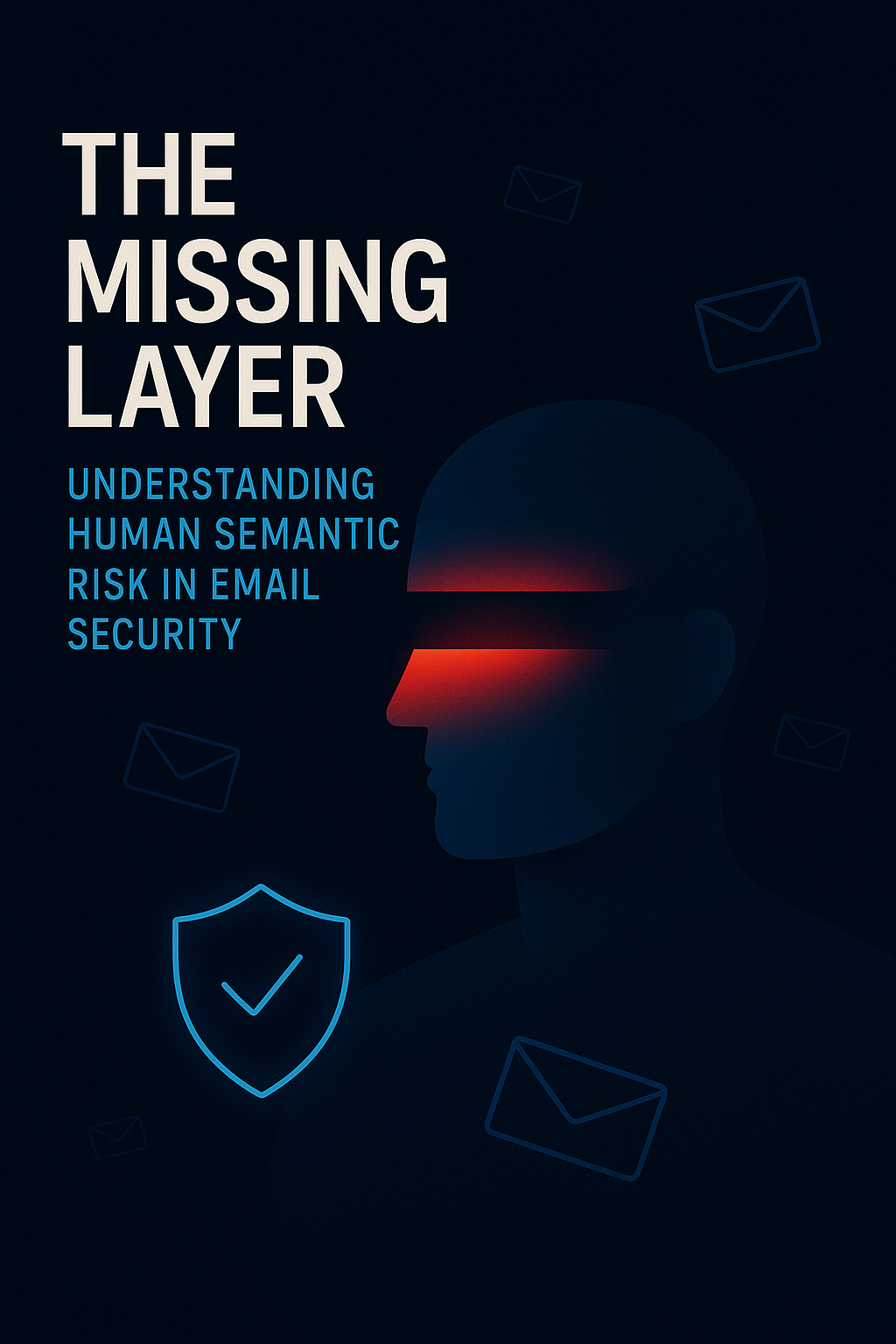
The Missing Layer: Understanding Human Semantic Risk in Email Security

Hackers aren’t just sending viruses and crude spam anymore; they’re crafting messages that sound authentic and contextually believable. They know that if their emails “make sense” to the recipient, there’s a good chance someone will fall for it. And since most legacy email defenses focus on technical indicators and known bad patterns – not on understanding an email’s intent – these semantic attacks slip through. The result? Your last line of defense is often just an overwhelmed employee deciding, “Does this email seem legit?” That’s a lot of pressure on humans – and a big risk for organizations.
In this blog post, we’ll explore what human semantic risk means, why it’s the “missing layer” in email security, and how you can address it. We’ll look at real scenarios of semantic phishing in action, reveal subtle contextual phishing detection cues to watch for, and discuss how semantic intent detection powered by AI can bolster your defenses. You’ll also get tips on implementing these ideas across different industries (from tech to manufacturing to law) and actionable takeaways to turn your people from the weakest link into your strongest layer of protection.
Executive Summary
- Traditional email security tools don’t truly “read” emails – leaving a gap where humans must interpret intent and context (and often make mistakes).
- This gap is human semantic risk, and attackers exploit it with convincing phishing messages that appear normal.
- By adding a semantic layer to your email defenses – via AI that understands an email’s intent, plus in-inbox coaching for users – you can catch context-based threats that others miss.
- We’ll cover examples of semantic phishing, a table of phishing “tells” to guide users, industry-specific advice, and key steps (like deploying AI email security with no MX changes, using an Inbox Advisor for real-time alerts, and leveraging human risk analytics to drive behavior change) to strengthen your email security posture.
What is “Human Semantic Risk” in Email Security?
Human semantic risk refers to the danger that comes from how people interpret the meaning of emails. In simpler terms, it’s the risk that a well-crafted malicious email can trick a human through context and language, rather than through obvious technical ploys. Cybercriminals target the natural human tendencies to trust and respond in context. They exploit semantics – the tone, wording, timing, and implied context of a message – to deceive employees. If an email seems legitimate enough in context, a busy person may comply with a request that turns out to be malicious.
Why is this a “missing layer”? Think of the typical layers of email security: spam filters blocking known bad senders, malware scanners catching dangerous attachments, link analyzers flagging known phishing URLs, etc. These are important, but they largely operate on patterns and signatures. Now imagine an email that doesn’t set off any of those alarms – no bad links or viruses – but is malicious in its intent.
In essence, human semantic risk is the vulnerability that arises when email security relies on humans to catch what the tools missed – like understanding if “Hey, can you send me the client list?” is a normal request or a sneaky ploy. It’s “human” risk because it leverages human psychology and trust, and “semantic” because it’s all about the meaning/context rather than overt technical threats. Addressing this missing layer means enabling either humans or machines (ideally both) to better interpret an email’s true intent before it’s too late.
Why Traditional Security Misses the Mark on Semantics
A classic spam filter or secure email gateway will excel at catching mass-mailed scams, known phishing URLs, and suspicious attachments. But ask it to determine if the context of an email is fishy? That’s outside its job description. Here’s why traditional tools often fail to catch semantic attacks:
- Rule and Pattern Dependence: Most email defenses look for known bad patterns – a virus signature, a sender on a blocklist, certain keywords. They struggle with contextual phishing detection. If a phishing email doesn’t trip a known rule (say, it’s a unique scenario or a carefully worded business email compromise), the system gives it a pass. Attackers purposely craft messages that appear routine (e.g., a simple request or a reply in an ongoing thread) to evade those pattern-based checks.
- No Understanding of Intent: Traditional filters ask “Does this email contain something obviously malicious?” They don’t ask “What is this email trying to accomplish?” For instance, an email might say, “Please review the attached Q3 financial report,” with a benign-looking PDF. A gateway might clear it since PDFs are typically safe. But the actual intent could be to trick the CFO into opening a fake report and entering credentials on a phony login page. The intent (stealing credentials) is hidden behind perfectly normal language. Without analyzing intent and context, the security system misses the threat.
- Emerging Threats and AI-generated Attacks: Threat actors are now using AI to churn out phishing emails that are unique, well-written, and contextually tailored to victims. These emails don’t have the tell-tale signs of old-school phishing. A recent surge in AI-assisted phishing means attacks are harder to recognize by both users and filters. If your tools rely on yesterday’s blacklist or a regex pattern, they’re blind to today’s one-of-a-kind AI-generated scam email that reads just like a legitimate message. The result: more of these convincing emails end up in inboxes, where only a wary human (or smarter AI) might sniff out the deception.
Traditional email security misses the mark on semantics because it wasn’t designed to read between the lines. It treats email security like a checklist (“no virus, no banned attachment, sender looks okay, delivers message”), whereas the attacker is playing a whole different game of persuasion and context. To catch those kinds of threats, we need security that can analyze the meaning of emails – essentially, tools that can think a bit more like humans do when judging a message’s trustworthiness.
Real-World Examples: How Attackers Exploit Semantics
To truly grasp semantic attacks, let’s look at a few scenario-based examples of semantic phishing in action. These illustrate how an email can seem perfectly ordinary and yet be completely malicious under the surface:
- Scenario 1: The Fake Boss Favor – It’s late afternoon, and Jenna in accounting gets an email from her CEO: “Hi Jenna, I’m tied up in a meeting but need a quick favor. Could you purchase 15 gift cards for a client event? I’ll reimburse – just send me the codes ASAP. Thanks so much, [CEO Name].” The tone is casual and the request, while odd, doesn’t sound outright illegal. There are no links or attachments, just a friendly appeal. Jenna is new and eager to help. What are the chances she spots that the “From” address is a lookalike domain, or that this request violates company policy? This is a classic business email compromise tactic – no obvious phishing signs, just semantic tricks (urgency, authority, and a plausible scenario) to prey on human trust.
- Scenario 2: Vendor Invoice Switcheroo – Tom works in accounts payable for a manufacturing company. He receives an email that appears to be from a regular parts supplier. It’s written in a polite, professional manner: “Dear Tom, I hope you’re well. Please note we’ve updated our bank details for future payments. Attached is the revised invoice for last month’s order, reflecting the new account info. Thank you for your prompt attention.” The email domain and signature look right (the attacker either spoofed the vendor or compromised their account). There’s no malware in the PDF invoice, just altered bank details. Everything semantically checks out – friendly greeting, context of an ongoing business relationship, proper language. If Tom isn’t hyper-vigilant, he wires the payment to the attacker’s account, thinking he’s just paying a normal bill.
- Scenario 3: The “Urgent” IT Support Email – A consultant at a professional services firm gets an email from “IT Support” saying: “Your account password is expiring. To avoid losing access to the client portal, please renew your password by clicking here.” The email looks identical to typical company IT announcements – same logo, signature block, and wording style – and it comes during a busy week. The consultant is in the middle of a project and quickly clicks the link, which leads to a fake login page that looks just like the real one. Because the context made sense (passwords do expire, and losing access would be bad), and the tone matched what she expects from IT, she didn’t spot the subtle difference in the sender’s address. One hastily entered password later, the attacker has her credentials. No antivirus or gateway would have flagged that email; only a keen human eye or a savvy AI that noticed the semantic context (e.g., unusual timing of the request, domain slight variation) could have saved the day.
In each of these scenarios, the phishing email’s power comes from semantics – who is asking, how they ask, and when – rather than obvious technical markers. The attackers bank on the fact that busy people often respond to requests that feel normal. These examples also show why training alone isn’t a perfect solution: even diligent employees can be fooled when a phish doesn’t “look” like a phish at first glance. We need tools that can catch these subtleties, and we need to educate users on what clues to look for. Let’s dive into those clues next.
Spot the Signs: Semantic Phishing Cues and User Guidance
Not all phishing attempts come dressed in neon signs saying “this is a scam.” Many look like perfectly legitimate emails until you scrutinize them. Here’s a quick guide to some semantic cues that an email might be dangerous, and what you (or your users) should do if you spot them. Keep these in mind as a cheat-sheet whenever you’re unsure about an email:

These cues are all about reading the situation, not just the content. Teaching your team to notice these semantic warning signs is important. However, expecting every employee to catch every subtle phish is unrealistic (we’re all human, after all). This is where technology can play a huge supporting role – by doing semantic analysis at scale and even coaching users in real time when an email looks suspicious. In the next section, we’ll explore how to fortify this human layer with AI and smart tools, so you’re not relying on gut instinct alone.
Adding the Missing Layer: How to Detect Intent and Thwart Semantic Attacks
Closing the semantic gap in email security requires a combination of advanced technology and user-facing tools. Essentially, we want an email security stack that can understand what an email is trying to do, and we want to assist the human at the endpoint (the reader) in making safe choices. Here are the key components of a modern approach to tackle human semantic risk, and how you can implement them:
- Deploy AI Email Security for Semantic Intent Analysis: The latest AI email security platforms use natural language processing and machine learning (including LLMs – large language models) to literally “read” an email like a person would. They perform semantic intent analysis on messages – parsing things like the tone, the ask, and the context – to determine if an email is fishy even without known bad indicators. For example, if an email is asking “Are you available to process a payment?” and that’s unusual for the sender or timing, advanced AI can flag it. Unlike legacy filters, these tools understand the “why” behind an email. The beauty is that many such solutions integrate directly via API into your email system (O365, Gmail, etc.) with no MX change to your mail flow. In other words, you don’t have to reroute your emails through an external gateway. This API deployment model means setup can be done in minutes, not months, and it leaves your existing email configuration untouched. By implementing an AI-driven semantic layer, you catch those sneaky intent-based threats before they reach the user’s inbox.
- Empower Users with an In-Inbox Advisor (Real-Time Alerts & Coaching): Even with great filtering, some suspicious emails will arrive (some might be borderline, or perhaps intentionally allowed through for user awareness). This is where an Inbox Advisor comes in. An in-inbox security advisor is like a smart shoulder angel that provides real-time alerts and guidance inside the user’s email interface. For example, if a message looks suspicious, the advisor might display a warning banner: “This email is asking for a payment request – which is unusual for this sender. Treat with caution.” Such in-inbox coaching tools use AI to highlight the semantic cues we discussed, but in the moment the user is reading the email. It’s instant training and protection rolled into one. Users still get to make the final decision (empowering them to learn and not feel completely taken over by IT), but they have a friendly AI second opinion to catch what they might miss. Over time, this kind of real-time coaching builds a security-savvy culture, as employees start to internalize these warnings and spot suspicious emails on their own. (And if your organization uses a solution like StrongestLayer’s Inbox Advisor, these alerts and tips are delivered seamlessly in Outlook or Gmail without any complex setup – again, no changing mail routes or installing clunky software on each device.)
- Leverage Human Risk Analytics to Drive Behavior Change: How do you know which employees might be more susceptible to semantic attacks? Or whether all this training and alerting is actually reducing risk? This is where human risk analytics come into play. By analyzing patterns of user behavior – who frequently clicks potentially risky links, who reports phishing attempts, who fails phishing simulations – security teams can identify vulnerable users and tailor interventions accordingly. For instance, you might discover that your sales department is chronically quick to click on external PDFs, or that Bob in accounting has clicked two fake CEO emails in the past quarter. Armed with these insights, you can provide targeted coaching to those who need it most, rather than one-size-fits-all training. Over time, you should see measurable behavior change: fewer mistakes, more reported phishes, and generally a more vigilant workforce. Modern AI platforms often include dashboards for this “human risk” scoring. They not only tally risky actions, but can also correlate them with the types of threats encountered. This closes the feedback loop – you see, for example, that after rolling out in-inbox alerts and some fresh training, the finance team’s response rate to suspicious emails improved significantly. The goal is to turn human risk into human strength by continuously learning where the weak points are and addressing them.
- Employ Advanced AI Reasoning (Context Correlation Engines): Not all AI is created equal. The most effective systems go beyond simple machine learning and use reasoning engines to connect the dots. Take StrongestLayer’s TRACE reasoning engine as an example – it uses multiple AI models in tandem to evaluate an email the way a seasoned analyst would. It doesn’t just scan for bad links; it asks higher-order questions like, “What is this message trying to get the user to do, and is that normal?” By using LLM correlation, such an engine can weigh numerous factors (sender reputation, email content, conversation history, unusual metadata) together and make a judgment call. This kind of AI essentially replicates a human’s intuition at machine speed. It can catch, say, that an email asking a junior employee for a database dump is weird because in the past only the CTO requested such things, and even then not via email. These advanced reasoning systems are crucial for detecting novel, targeted threats (like AI-generated phishing that has no precedent). They provide a safety net that continuously adapts to new attacker techniques, ensuring that even as phishing ploys evolve, your detection keeps up. In practical terms, when evaluating solutions, ask vendors about how their AI works. Is it just keyword-based, or is it an ensemble of intelligent components that truly understand context and intent? The latter is what will make the difference in catching the clever attacks.
- Ensure Solutions Fit Your Environment Seamlessly: Finally, a bit of practical advice – the best security measures are those that actually get implemented and used. Look for approaches that are frictionless to deploy and maintain. As mentioned, API-based email security that doesn’t require rerouting email (no MX record changes) is a huge win because it means you can layer it on top of your existing setup with minimal effort. Similarly, tools that don’t flood your team with false positives or endless alerts will be more sustainable. The goal is to block threats without blocking workflows. If a solution constantly cries wolf or complicates how users access email, it will breed resentment and workarounds. The sweet spot is an intelligent system that quietly removes the truly dangerous stuff, flags the suspicious-but-not-certain stuff for user attention, and otherwise lets business run as usual. This is where AI’s precision is improving outcomes – for example, by understanding context, it can avoid flagging an email as phishing just because it contains “invoice” or some keyword, focusing instead on the truly suspicious signals. When evaluating new tools, consider doing a pilot and measuring both catch-rate and disruption. A semantic-aware solution should dramatically boost the catch-rate of phishing with only minimal increase in “Hey, is this okay?” messages to your users. In many cases, users will only notice that helpful banners or insights start appearing, and otherwise email works the same as yesterday – which is exactly the experience you want.
By implementing these measures, you add the “missing layer” that traditional security stacks lack. You’re now inspecting emails for their meaning and intent, not just their attachments and links. You’re helping users in the moment, not just after the fact with annual training. And you’re using data on human behavior to continuously fine-tune your approach. The result is a much more resilient email environment where both machines and humans are actively catching the bad stuff.
Different Industries, Different Semantic Threats (Implementation by Vertical)
Every organization uses email, but the types of semantic email threats can vary by industry. Attackers often customize their tactics based on what works in a particular sector. Here’s how semantic risk might manifest – and how to counter it – in a few key industries:
- Technology Companies & SaaS: In tech, attackers exploit the fast-paced, tool-heavy environment. They might impersonate dev ops alerts, cloud service providers, or even co-founders. For example, a startup may get a fake AWS suspension notice or a bogus GitHub “security alert” email urging immediate action. The high degree of trust in automated emails and the hectic environment is the perfect cover. Tech firms should implement semantic-savvy filters that understand their lingo and usual workflows. Emphasize to staff the practice of verifying any request for credentials or access, even if it looks routine. (Related reading: see our solutions for technology companies to learn how AI can prevent source code theft and cloud account hijacks in these scenarios.)
- Manufacturing & Supply Chain Industries: Manufacturing companies are prime targets for vendor fraud and impersonation because of the vast network of suppliers and shipments they handle. A common semantic attack here is the fake invoice or payment diversion request – like the scenario we described with Tom in accounts payable. Another is phishing emails posing as order updates or shipping notices that carry malware. Since production timelines are crucial, attackers create a false sense of urgency (“Parts shipment delayed – approve rush order now”). The fix? Besides strong processes (always verify bank detail changes by phone, for instance), use email security that can detect when an email’s context doesn’t match historical patterns (e.g., a one-off bank change request). Training should include these real-world scenarios. Many manufacturers are turning to AI-driven manufacturing security solutions that flag unusual supplier communications and protect intellectual property designs from sneaky social engineering.
- Professional Services (Consulting, Accounting, etc.): Professional services firms handle sensitive client data and often must meet strict compliance (think HIPAA for health data, SOX for financial data, attorney-client privilege in legal consulting). Attackers take advantage of the trust-based client communications and urgency around client requests. You might see phishing that claims to be a client asking for data, or an urgent request seemingly from a partner firm involved in a project. Because these industries run on timely communication, employees may bypass some security checks to keep clients happy. Solutions here should focus on guarding confidential data and ensuring any unusual client requests (like “send me all my files now to this new address”) are scrutinized. An AI that knows, for example, which clients normally communicate with which staff and how, can raise an alarm when something’s out of the ordinary. Also, integrating security that doesn’t slow down work is key – e.g., a 15-minute deployment that adds protection without burdening the busy consultants. (For specifics on protecting client info without breaking your flow, our guide on professional services security is a helpful resource.)
- Law Firms and Legal Services: Law firms are high-stakes targets for semantic phishing because of the large sums of money and sensitive information involved in legal transactions. Common scams include fake wire transfer instructions (attackers posing as clients or partners in a case) and attempts to trick lawyers or paralegals into emailing out confidential files. These emails often reference real case details (which might be scraped from public filings or hacked from inboxes) to appear legitimate. The consequences of one misstep – lost client funds or breached privilege – are severe, so the pressure is on. To combat this, legal organizations should employ tools that understand legal context. For example, if an email is asking a lawyer to break protocol (like bypassing the accounting department for a payout, or sending documents unencrypted), a semantic filter can flag that as unusual. Training wise, emphasize verification: no wire instructions or major decisions via email without confirming voice-to-voice. Many firms are adopting law firm security solutions that specialize in catching things like trust account fraud attempts and sniffing out when an email’s language includes subtle legal inaccuracies a real attorney wouldn’t make. Plus, keeping false positives low is crucial here – you don’t want to block an important court filing because the system was jittery, so a solution that “understands what’s real” in legal communications is invaluable.
The takeaway across these industries is that while the flavor of attacks differs, the core need is the same: contextual awareness. Whether it’s code, contracts, or CAD designs at stake, knowing what normal looks like in your field helps identify the abnormal. Customize your semantic security approach to the threats you face most often. And remember, the principles of intent analysis, user coaching, and human-aware metrics apply everywhere – they just might flag different things for a bank versus a hospital versus a software company.
Final Thoughts: Turning the Weakest Link into the StrongestLayer
Email security is no longer just about filtering out obvious spam and viruses – it’s about understanding people and language. Attackers have realized that tricking a human is often easier than hacking a system, so they’ve invested in making their emails sound right. This is why human semantic risk has become such a critical concern. The good news is we’re not helpless. By adding that missing semantic layer to our defenses, we can catch the tricks hidden in plain sight.
Think of it this way: we want to elevate our human layer from a liability to an asset. That means giving our people the tools and backup they need to make safe decisions, and giving our security systems the smarts to interpret context and intent. AI-powered semantic analysis in email can flag those “meaning-based” threats, and in-inbox advisors can whisper guidance to users exactly when they need it. Meanwhile, measuring and nurturing improvement through human risk analytics ensures that over time, fewer tricky emails slip through cracks.
At the end of the day, addressing human semantic risk isn’t about replacing human judgment – it’s about augmenting it. It’s about creating a partnership between advanced technology and educated, empowered users. Do this, and the next time a perfectly phrased phishing email lands in one of your inboxes, it will stick out like a sore thumb – either caught automatically by an AI filter or spotted by an employee who’s been coached to pause and question it. The “missing layer” will no longer be missing; it will be actively working to protect you.
Actionable Takeaways: Now that we’ve covered the what and why, let’s focus on the how. Here are some practical steps to start reducing human semantic risk in your email environment:
- Implement Semantic Email Scanning: Evaluate your current email security – can it analyze intent and language? If not, consider deploying an AI email security solution that can. Look for one that integrates via API for quick wins and doesn’t require an overhaul of your email infrastructure.
- Provide Real-Time User Guidance: Don’t wait for annual phishing training to reinforce good habits. Use an Inbox Advisor or similar tool to deliver real-time alerts and tips to users as they read emails. It’s like having a coach beside each employee, reminding them of what to watch out for in the moment.
- Enforce Verification on Sensitive Requests: Make it company policy (and back it up with tech enforcement where possible) that any request involving money transfers, credential changes, or sensitive data gets an extra step of verification. This could be as simple as a phone call or as advanced as an AI flag that requires manager approval.
- Use Human Risk Analytics: Start tracking metrics around phishing simulations, reported emails, and incidents. Identify who might need extra help. If certain departments or individuals show higher risk, do targeted training or send them additional resources. Likewise, celebrate and share when users correctly spot and report a phishing email – positive reinforcement goes a long way to change behavior.
- Continuously Update Training with Real Examples: Phishing tactics evolve, especially semantic ones that prey on current events or new business trends. Keep your awareness training up-to-date with the latest examples (e.g., “Here’s a phishing email making the rounds in our industry this month”). Some advanced platforms even auto-generate training content based on real threats hitting your organization, which can be a great way to ensure relevance.
By following these steps, you’ll be well on your way to closing the semantic gap. Remember, the goal is to build a resilient email security posture where technology and humans work hand-in-hand. Attackers may be crafty, but with contextual detection and educated users, you can outsmart them. When you shore up this missing layer, you transform your users from potential victims into active defenders – truly becoming the Strongest Layer of your cybersecurity defense. Here’s to safer inboxes and a security culture that turns that former “weakest link” into a formidable first line of defense. Happy (safe) emailing!
Frequently Asked Questions (FAQs)
Q1: What is human semantic risk in email security?
Human semantic risk refers to the way attackers exploit human trust and language understanding in phishing scams. People are often the weakest link in cybersecurity – an estimated 88% of data breaches involve human error. Cybercriminals craft emails that feel legitimate and routine, preying on our assumptions. For example, a phishing email might mimic a trusted vendor’s invoice perfectly except for one small detail (like a changed bank account number), so a busy employee could easily miss the red flag.
Q2: What is contextual phishing?
Contextual phishing is a highly targeted form of phishing that uses personal or business context to seem convincing. Instead of generic spam, the attacker impersonates someone you know (a colleague, boss, or vendor) or references real ongoing projects to blend in with normal communications. For instance, scammers may hijack a supplier’s email and send an “updated invoice” that looks just like your usual ones, only with fraudulent payment details. Because everything else appears normal and expected, these emails avoid obvious red flags and can trick even vigilant staff.
Q3: What is semantic intent detection and why is it important?
Semantic intent detection is an AI-driven email security technique that focuses on the meaning and intent behind an email, rather than just scanning for specific keywords or attachments. In practice, it asks “What is this email trying to make you do, and is that request typical or dangerous?”. By understanding context, this kind of system can flag messages that make unusual or risky requests (for example, a sudden request to transfer funds or share passwords) even if the email looks normal on the surface. This capability is crucial now, because many advanced phishing attacks don’t contain obvious malware or spelling mistakes – instead, they rely on tricking the recipient with a plausible-sounding request.
Q4: How do AI-driven email security tools catch phishing attacks that traditional filters miss?
Unlike old-school spam filters that rely on static rules and known bad signatures, AI-driven tools use machine learning to “read” emails more like a human would. They analyze context, relationships, and writing style to recognize when something’s off. This means they can detect subtle phishing ploys that legacy filters overlook – for example, an email with no malware link but an urgent, unusual request from what looks like your CEO. A traditional filter might not flag such a message (since it doesn’t trip any virus or keyword alarm), but an AI system will notice the suspicious intent and stop a potential business email compromise attempt in its tracks.
Q5: Are AI email security solutions easy to deploy for small businesses?
Yes – modern AI email security solutions are typically cloud-based and very straightforward to deploy. In many cases, you can connect them directly to your existing email platform (like Microsoft 365 or Google Workspace) via API in minutes. There’s usually no complex setup like changing MX records or installing hardware appliances, so your email flow isn’t disrupted. For a small or mid-sized business, this means you can get enterprise-grade phishing protection up and running quickly, without a big IT project or downtime.
Q6: Will an AI email security tool disrupt our workflow or confuse our team?
A well-designed AI email security tool should work quietly in the background, so it won’t disrupt day-to-day email usage. Legitimate emails still go through as normal; the AI just filters out the bad stuff behind the scenes. When it does need to alert a user, it often does so with a simple, contextual warning banner or note right in the email – nothing too intrusive or hard to understand. In short, it adds a layer of protection without slowing down your team’s workflow. In fact, by catching malicious emails early, it can reduce distractions and emergency fire-drills caused by phishing incidents.
Q7: Do we still need to train employees if we have AI email security?
You should continue basic security awareness training, but an AI email security system significantly lowers the burden on employees. Think of the AI as a safety net – it catches and neutralizes many sophisticated phishing attempts automatically, so your staff aren’t expected to spot every single threat themselves. The combination of training + AI is powerful: employees stay informed about risks, and the AI reinforces that training by warning them in real time if an email looks suspicious. Over time, this approach actually makes your team even savvier, because they learn from the AI’s alerts while enjoying a much safer inbox.
Q8: Can AI help defend against AI-generated phishing attacks?
Absolutely. Attackers are now using generative AI to craft phishing emails that are more convincing than ever, so defending with AI is a smart move. AI-driven email security tools excel at spotting the subtle signs of deceit in messages, even when the phishing emails are auto-generated and highly polished. They analyze context and intent (e.g. unusual requests or tone) to catch what a human or basic filter might miss. In essence, it’s using AI to fight AI – giving your business a much better chance to catch novel, fast-changing scams that would slip past traditional defenses.
Q9: Does an AI email security solution replace my current email filters?
Not necessarily – in fact, most companies use AI email security as an added layer on top of existing defenses. You don’t have to rip out your built-in spam filter or secure email gateway; the AI solution works alongside them. It provides an extra level of scrutiny focused on phishing and social engineering, catching sophisticated attacks that your regular filters might miss. By running in parallel with your current tools (and without adding complexity), the AI layer strengthens your overall protection without interfering with the filtering of routine spam and viruses.
Q10: Do AI email security tools require a lot of upkeep or expert management?
No – one big advantage of AI-driven email security is that it’s largely hands-off for your IT team. These systems continuously learn from new threats and update themselves, so you won’t be stuck constantly tweaking rules or chasing false alarms. Unlike some legacy solutions that might flood you with irrelevant alerts, a good AI-based tool is more precise thanks to its contextual understanding – meaning far fewer false positives to sort through.
Even small businesses without dedicated security staff can deploy AI email protection and let it run with minimal maintenance, freeing you to focus on your core business while staying safer from email threats.
Q11: What is a “semantic AI” email security solution and should our firm consider one?
A semantic AI email security solution is a next-generation email protection system that uses artificial intelligence – particularly natural language processing and machine learning – to analyze email content and behavior in depth. Unlike traditional email filters that might only check sender reputation or scan for viruses, a semantic AI system “reads” the email to understand its intent and context. For example, StrongestLayer uses an LLM-based engine to evaluate what an email is trying to do (ask for money, credentials, sensitive info) and can spot when something is off, even if the email looks innocuous on the surface.
These systems also correlate data (links, sender patterns, etc.) and continuously learn from new threats. Law firms – especially those frequently targeted or those dealing with very sensitive data – should seriously consider such a solution. It adds a powerful layer of defense, catching advanced phishing and preventing many mistakes (like sending to wrong recipients) by issuing warnings. Many AI email security platforms are cloud-based and integrate easily with Office 365 or Google, making them relatively straightforward to deploy. In essence, if your firm wants to minimize the risk of falling victim to sophisticated scams or accidental data leaks, a semantic AI solution is a highly effective tool. It’s like having a security expert proofreading every email in real time. For most firms concerned about email security (which should be every firm), adopting this technology is a smart move to stay ahead of evolving threats.




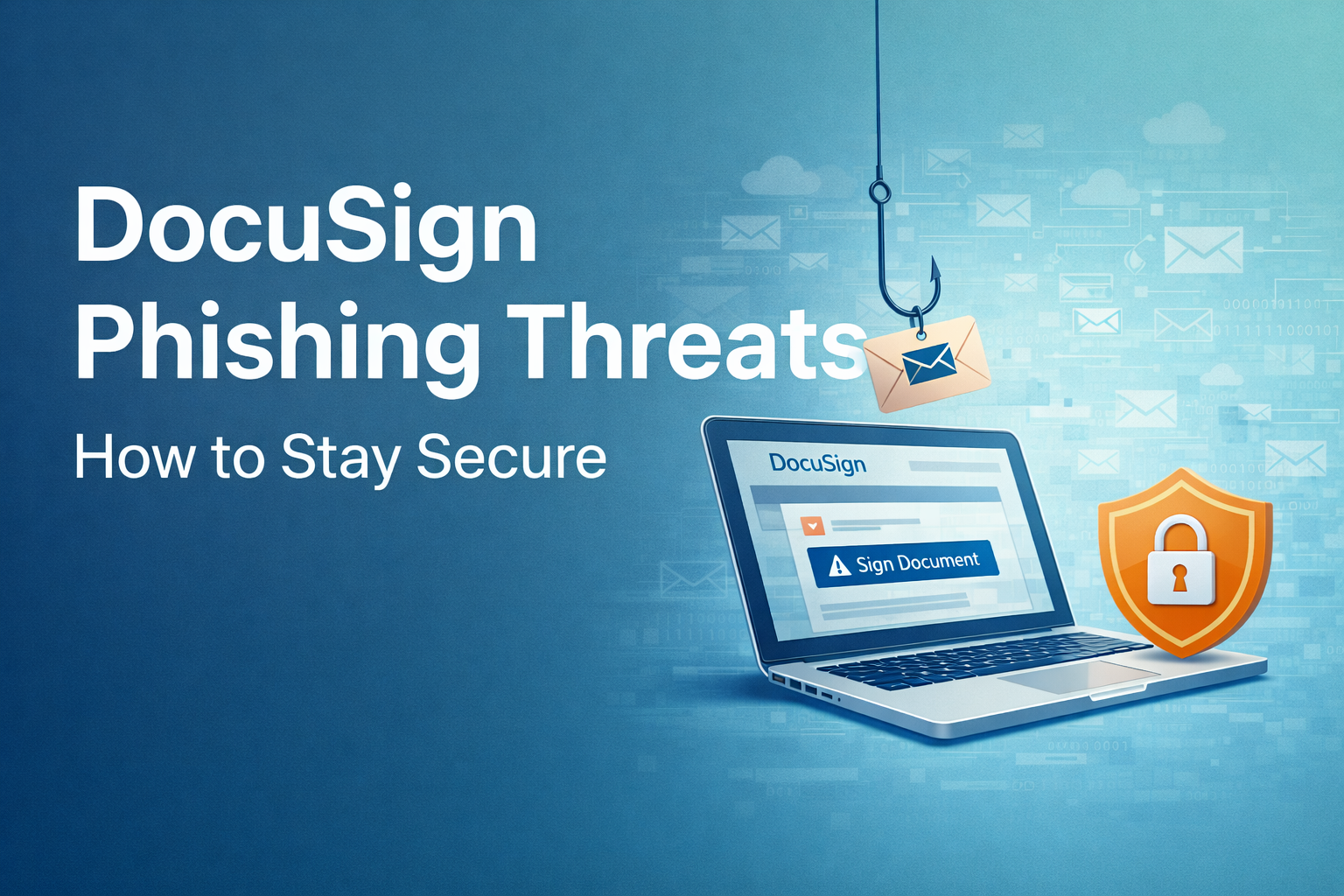
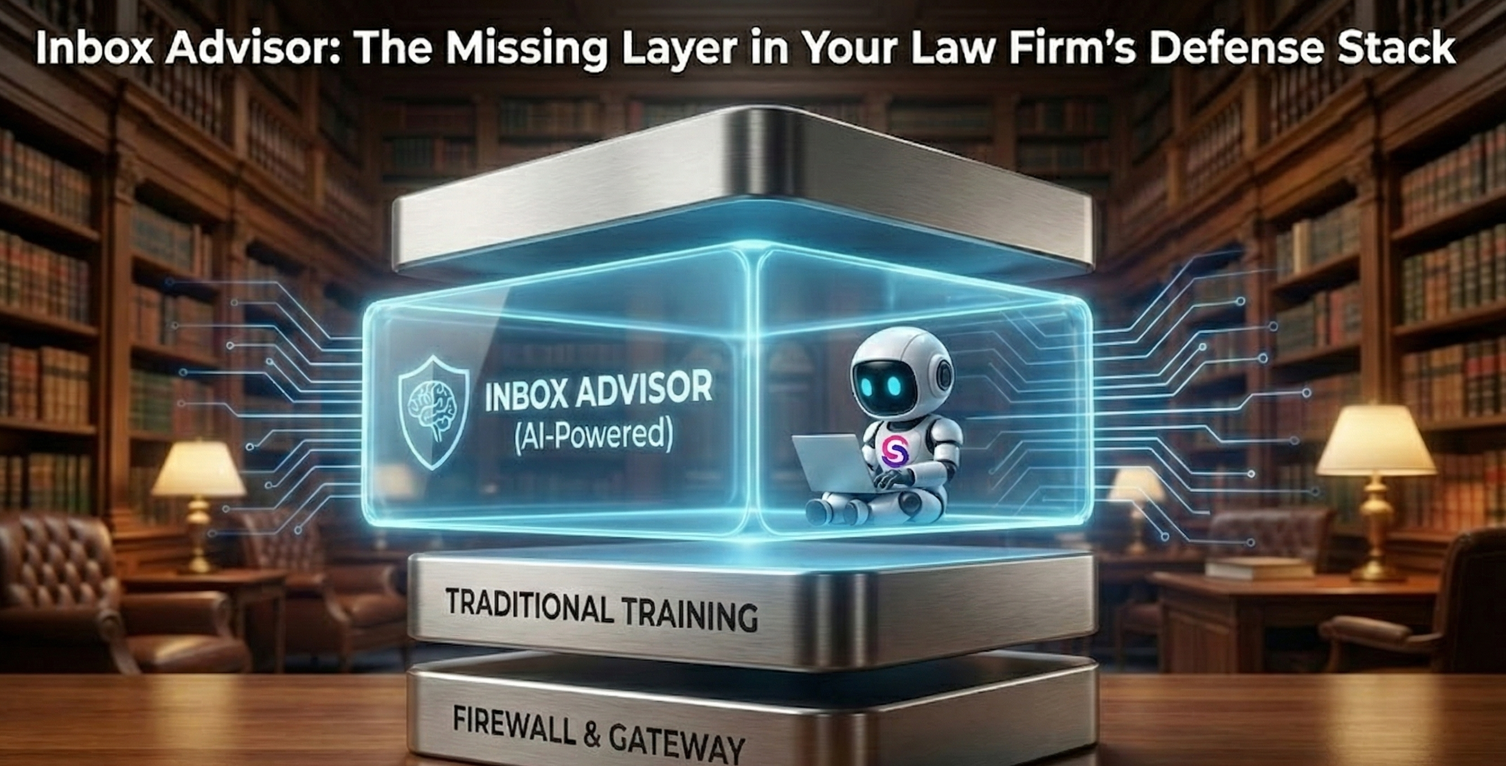




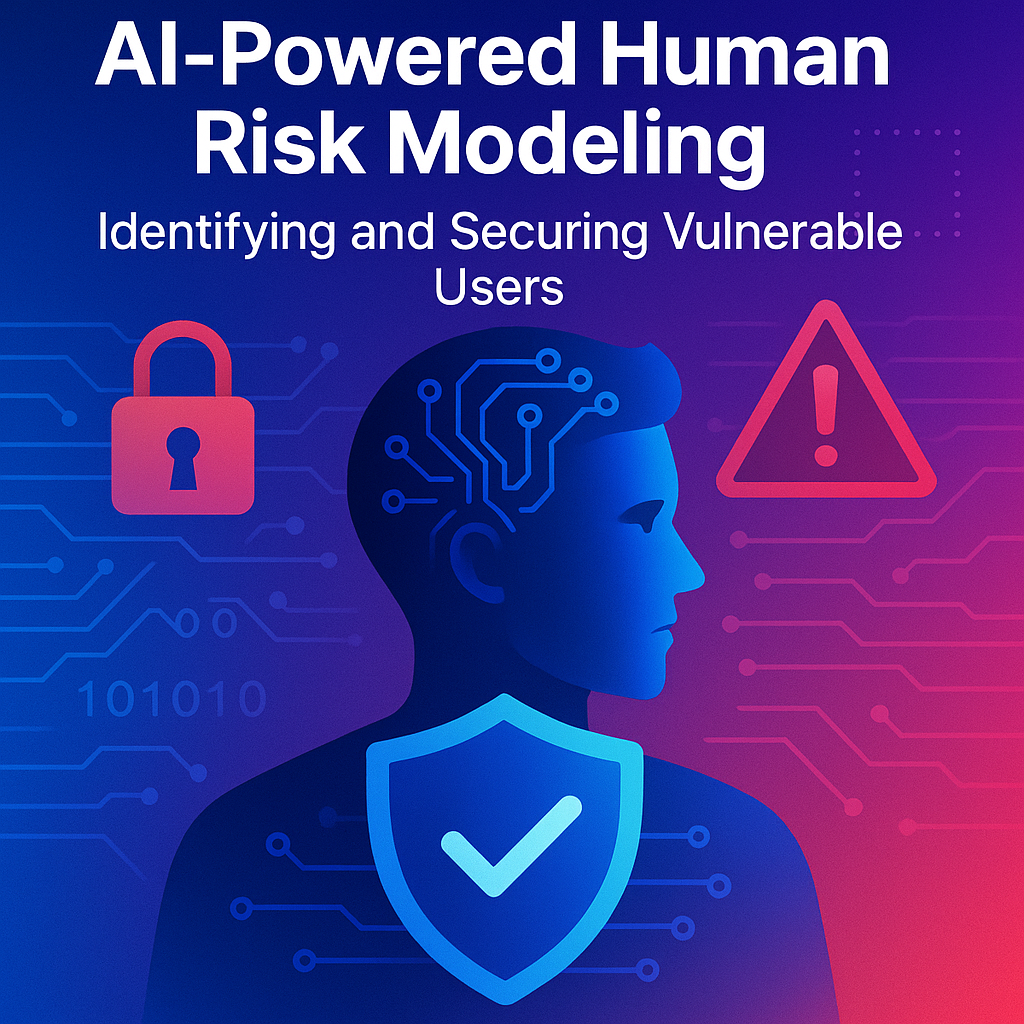
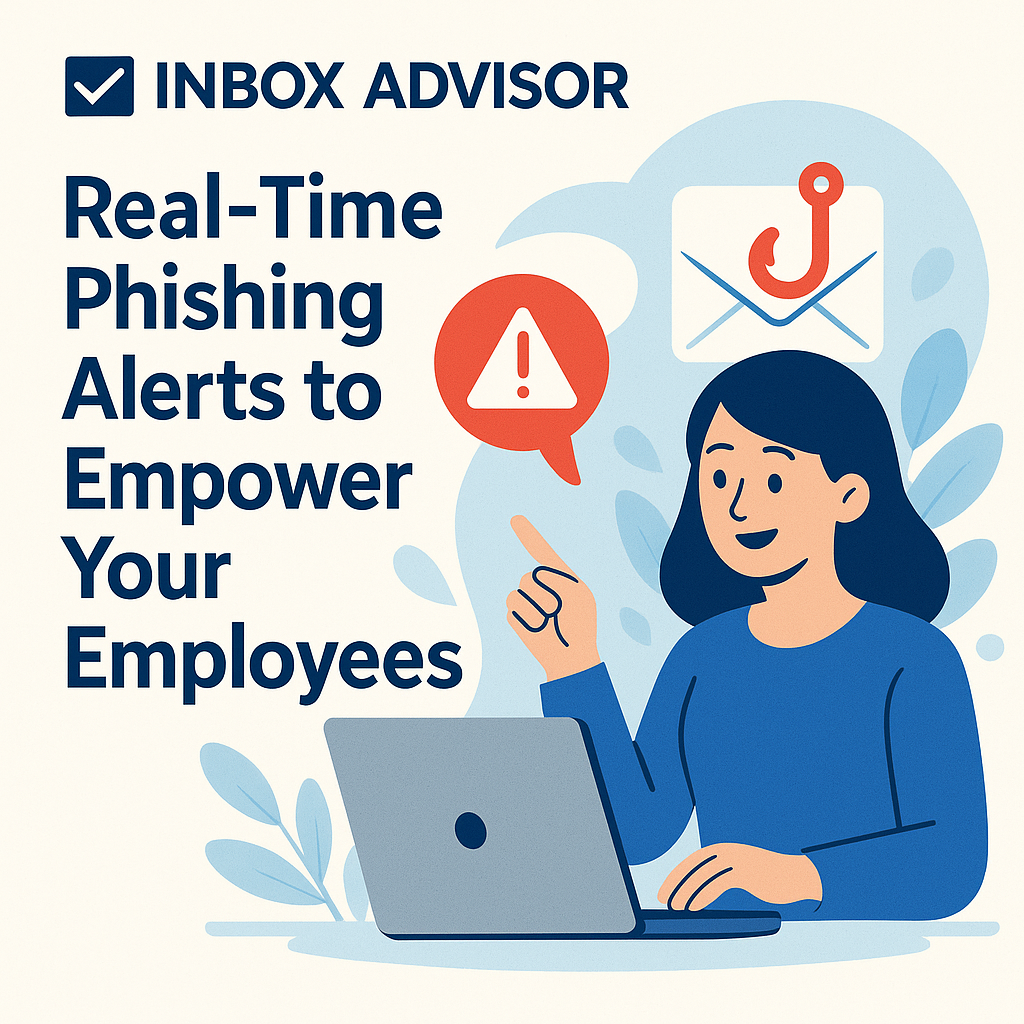

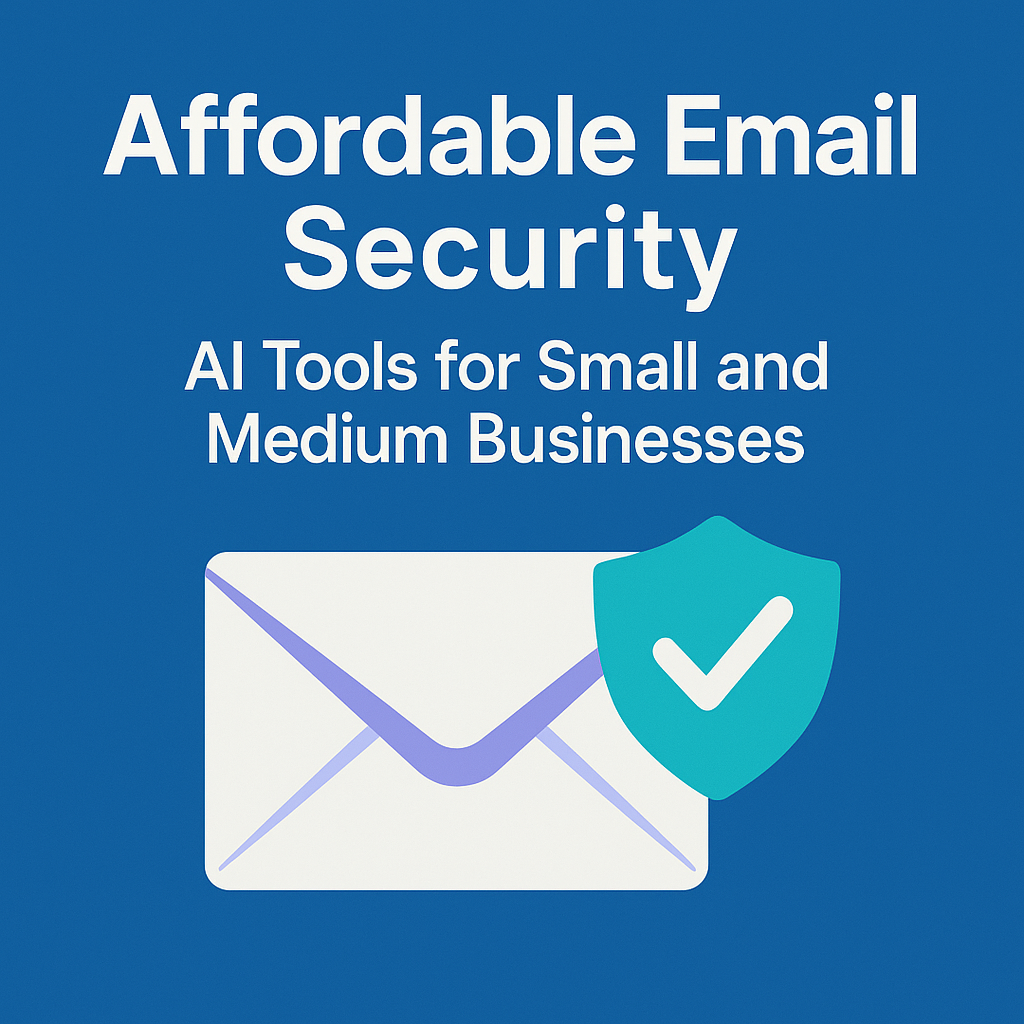

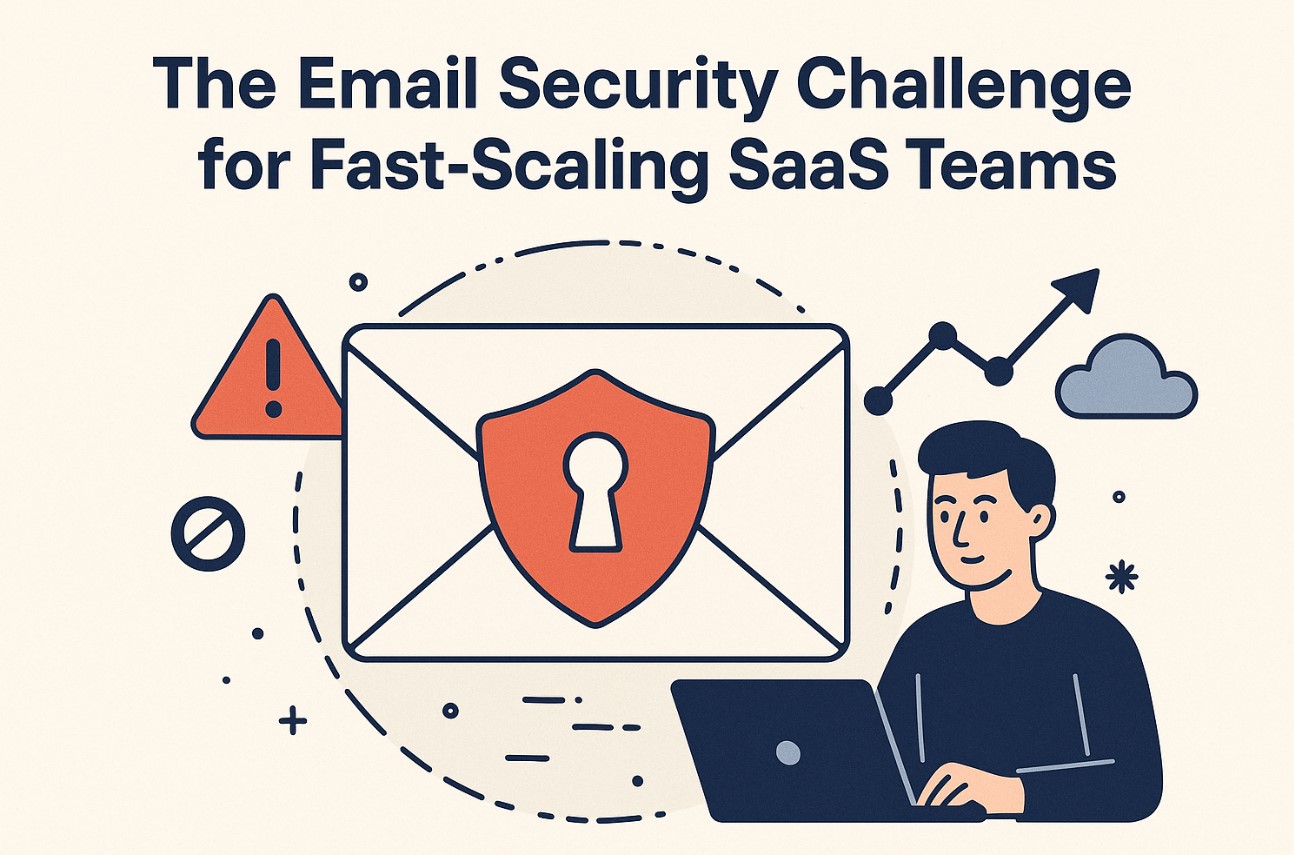
.png)





.png)

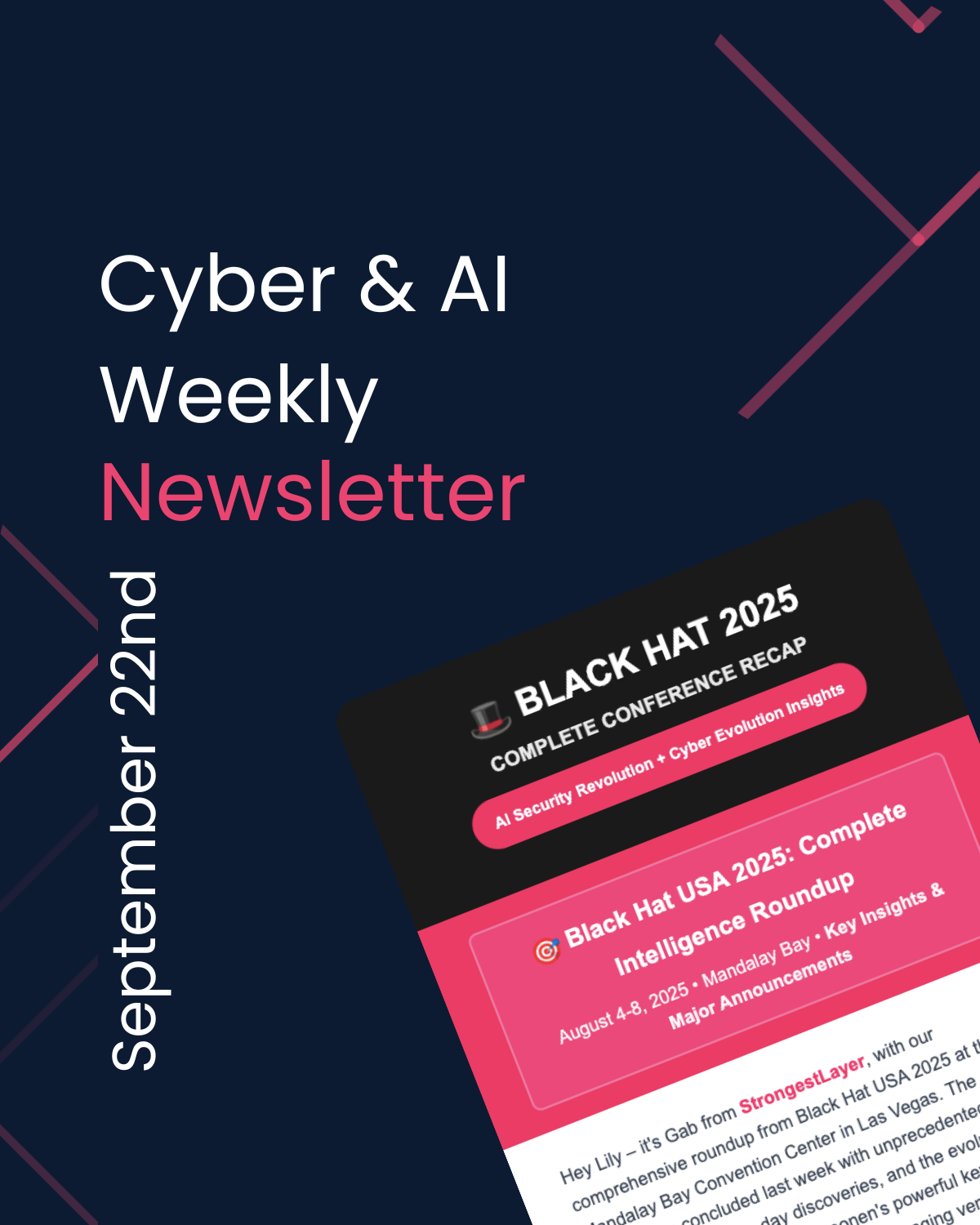
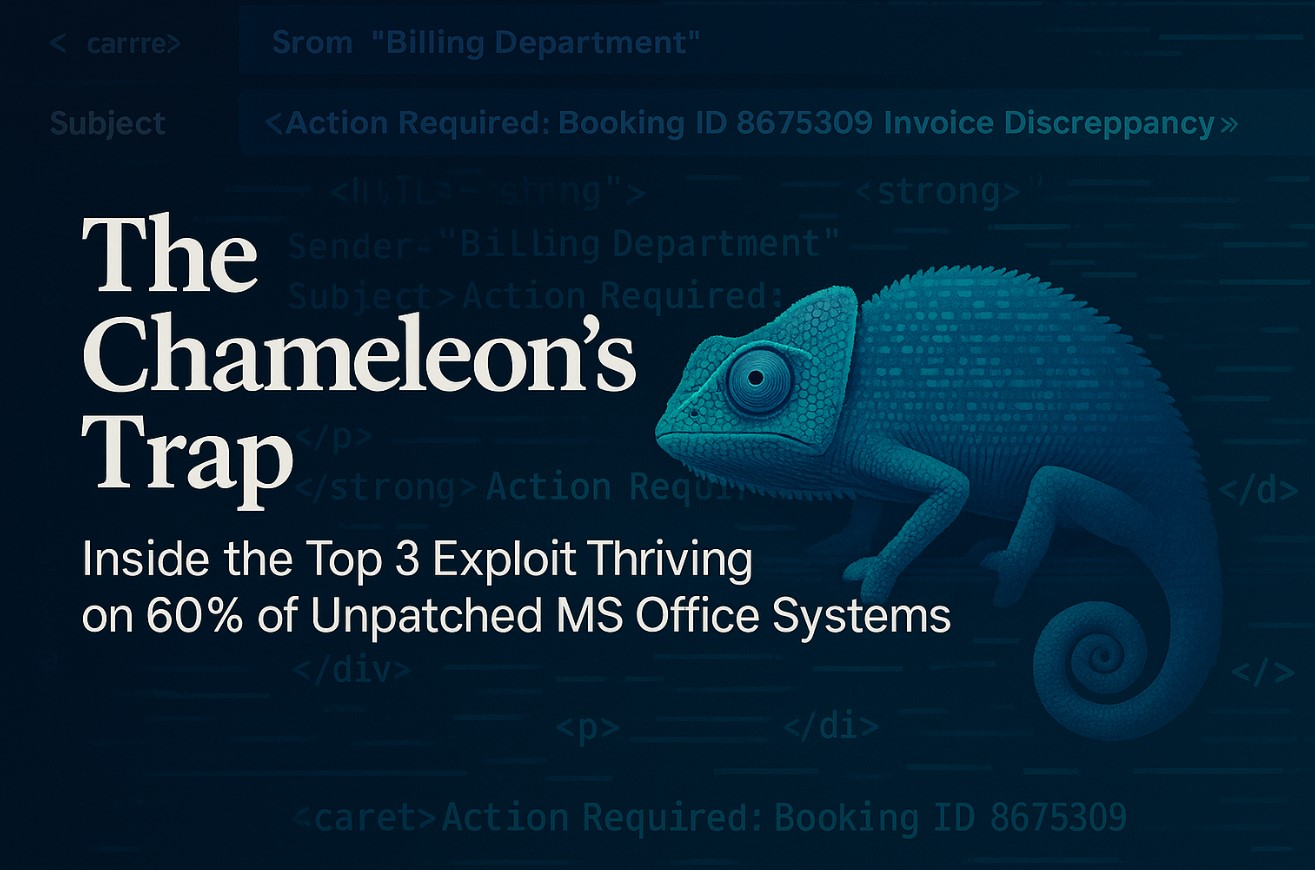

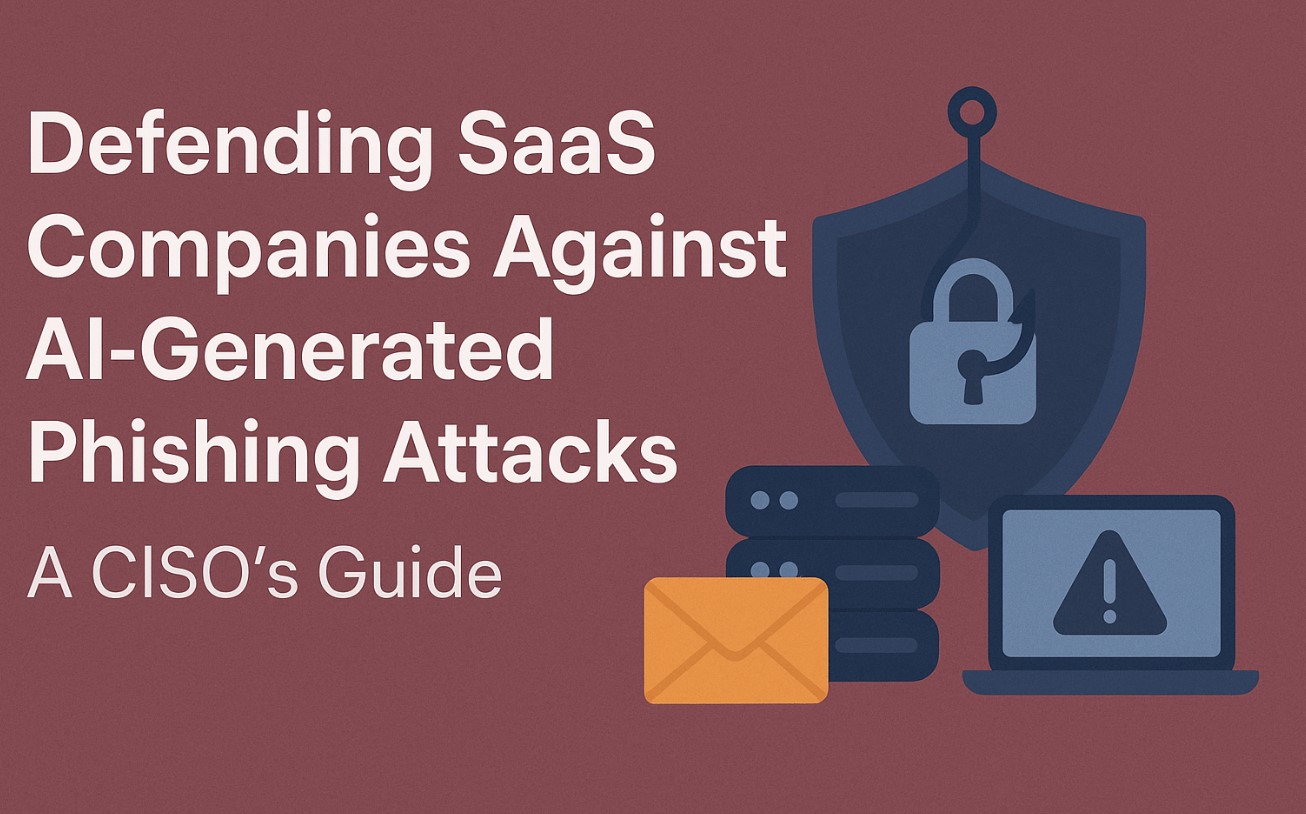


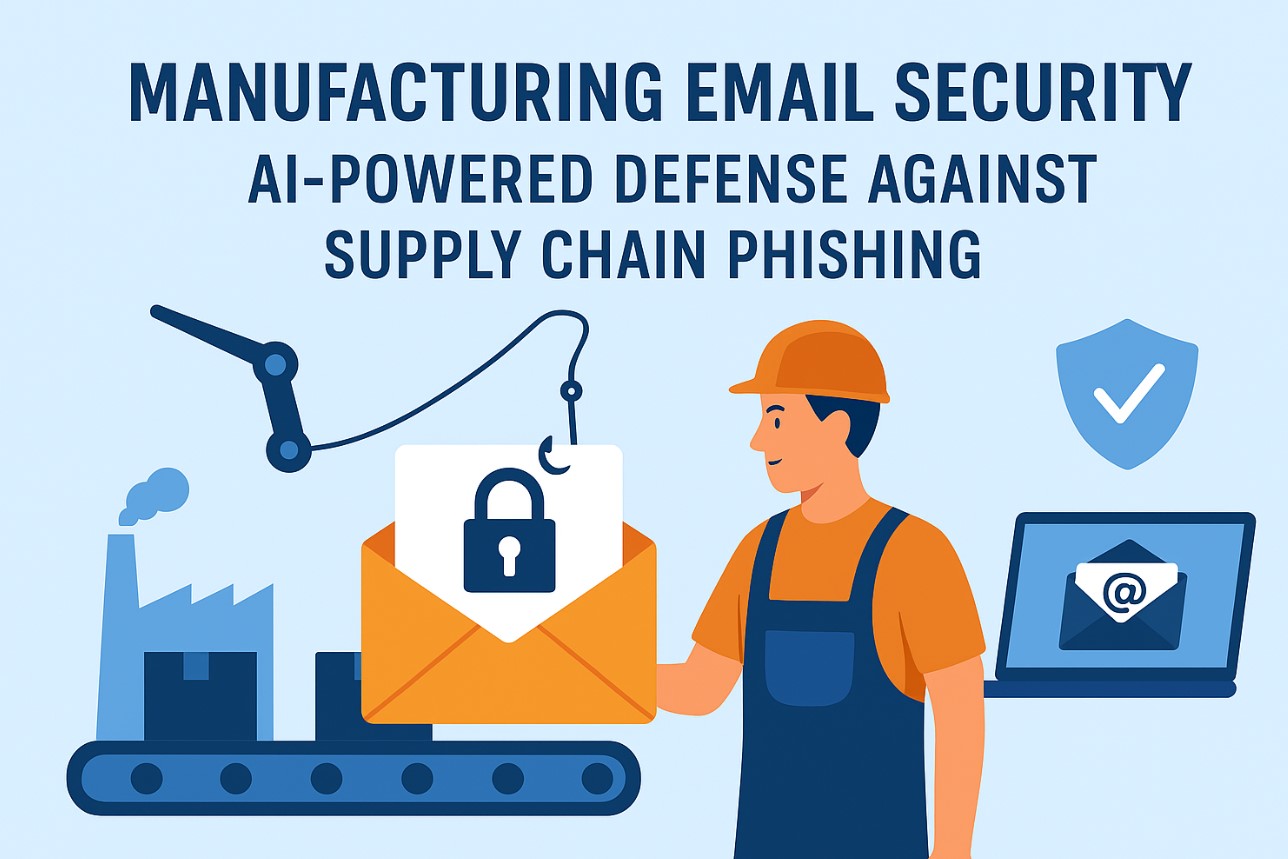

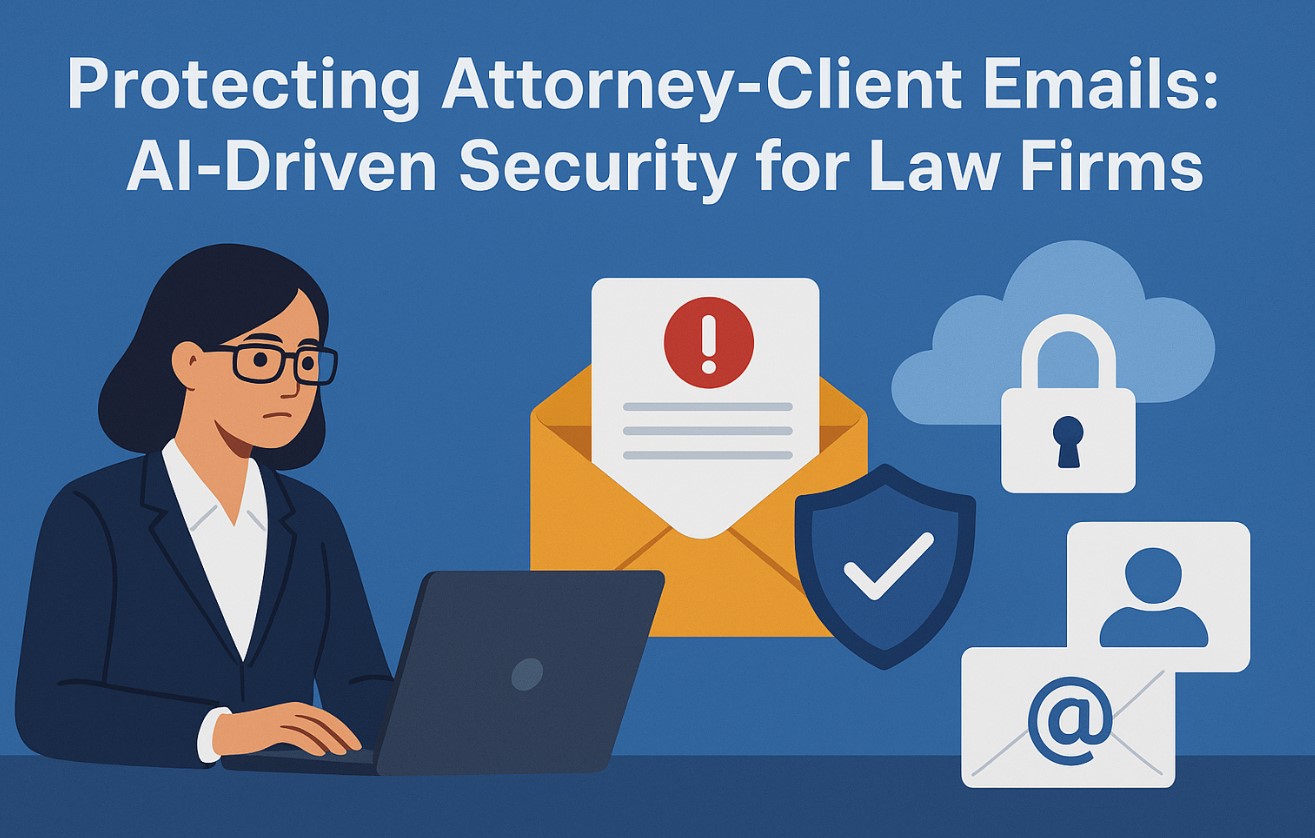

.png)

.png)
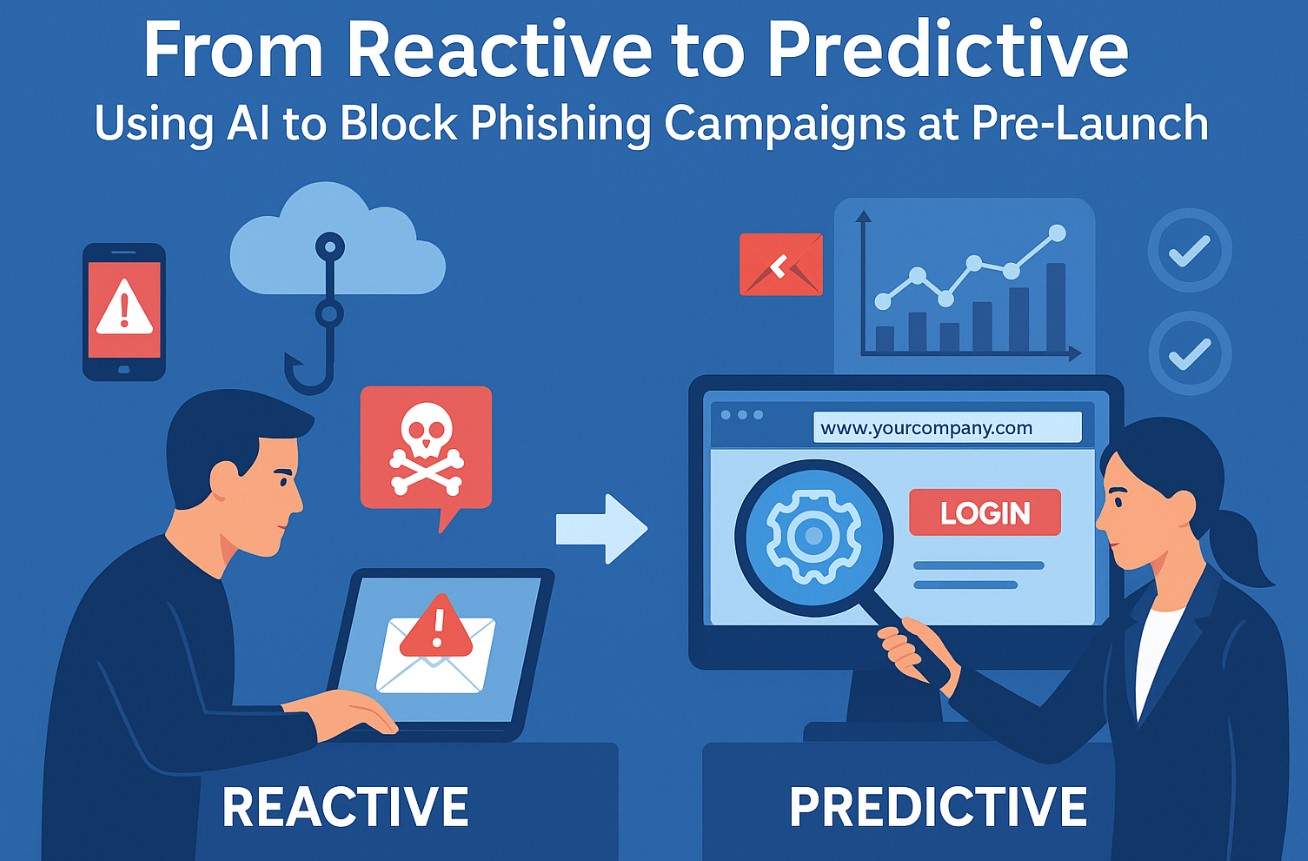


.png)
.jpg)
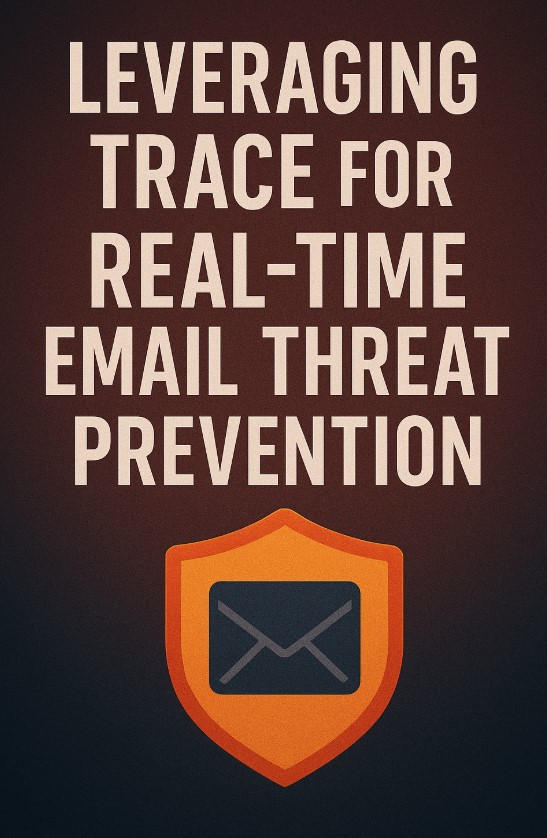
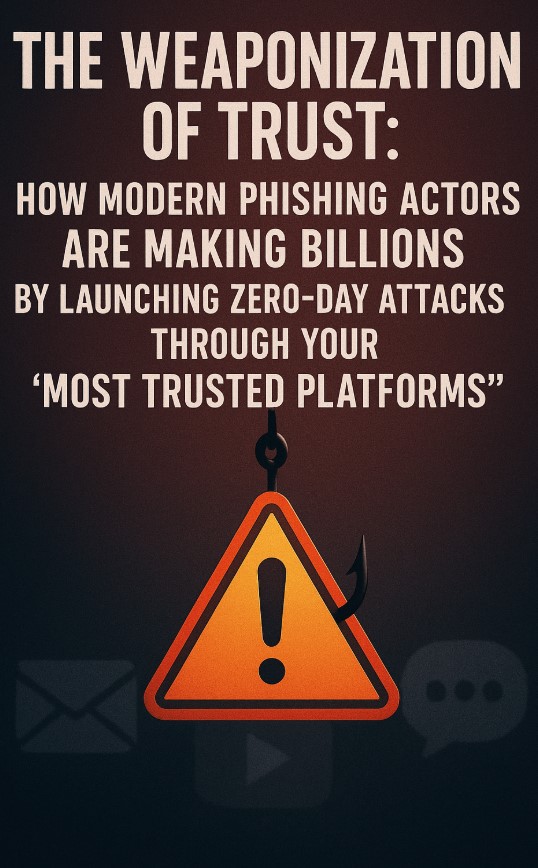
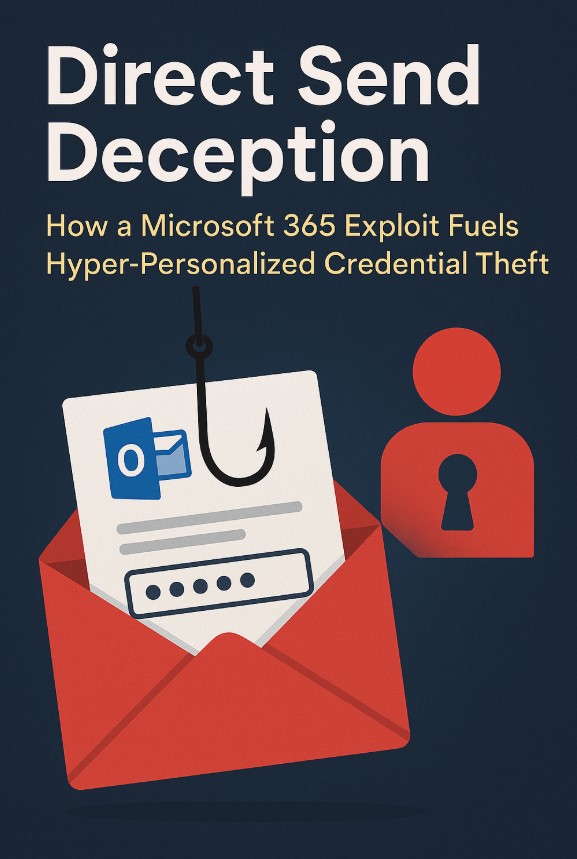
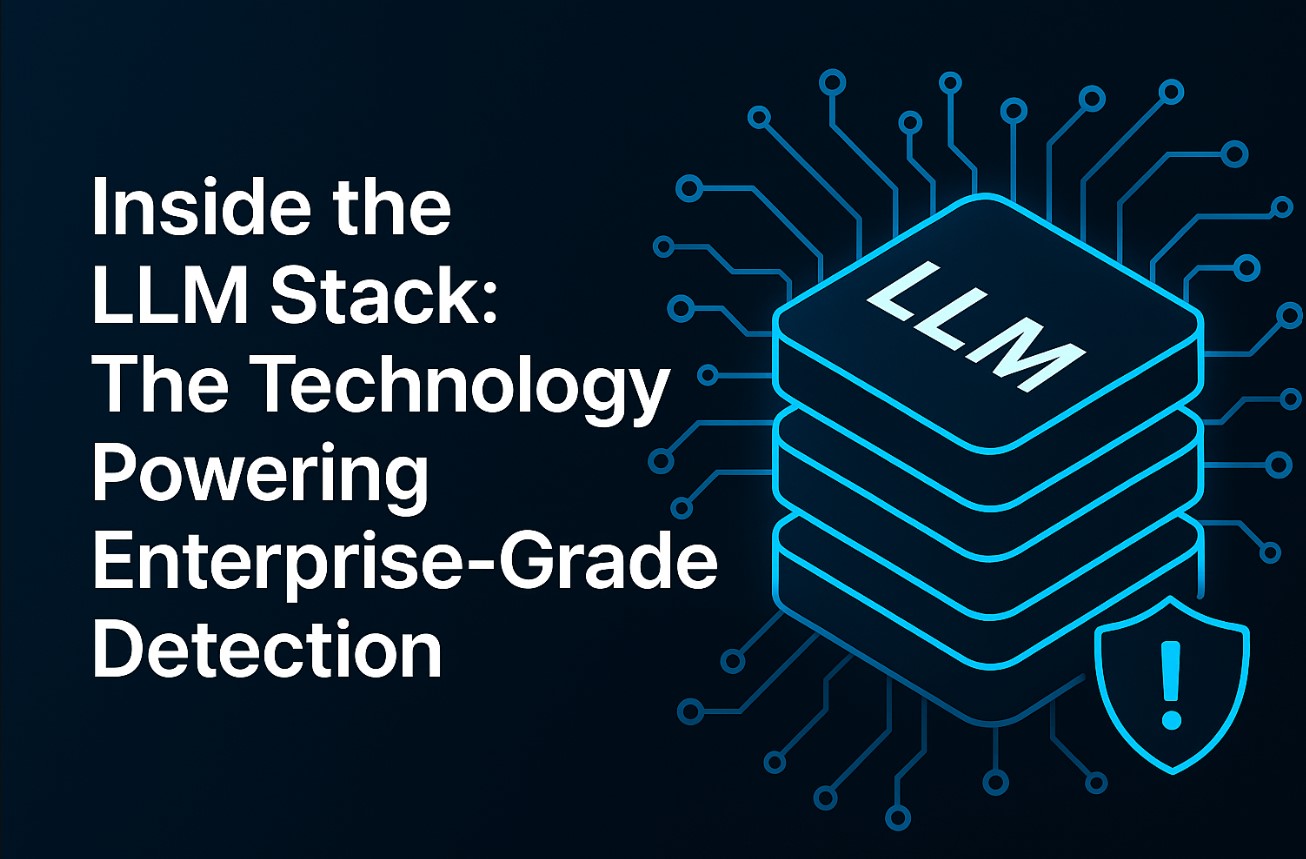
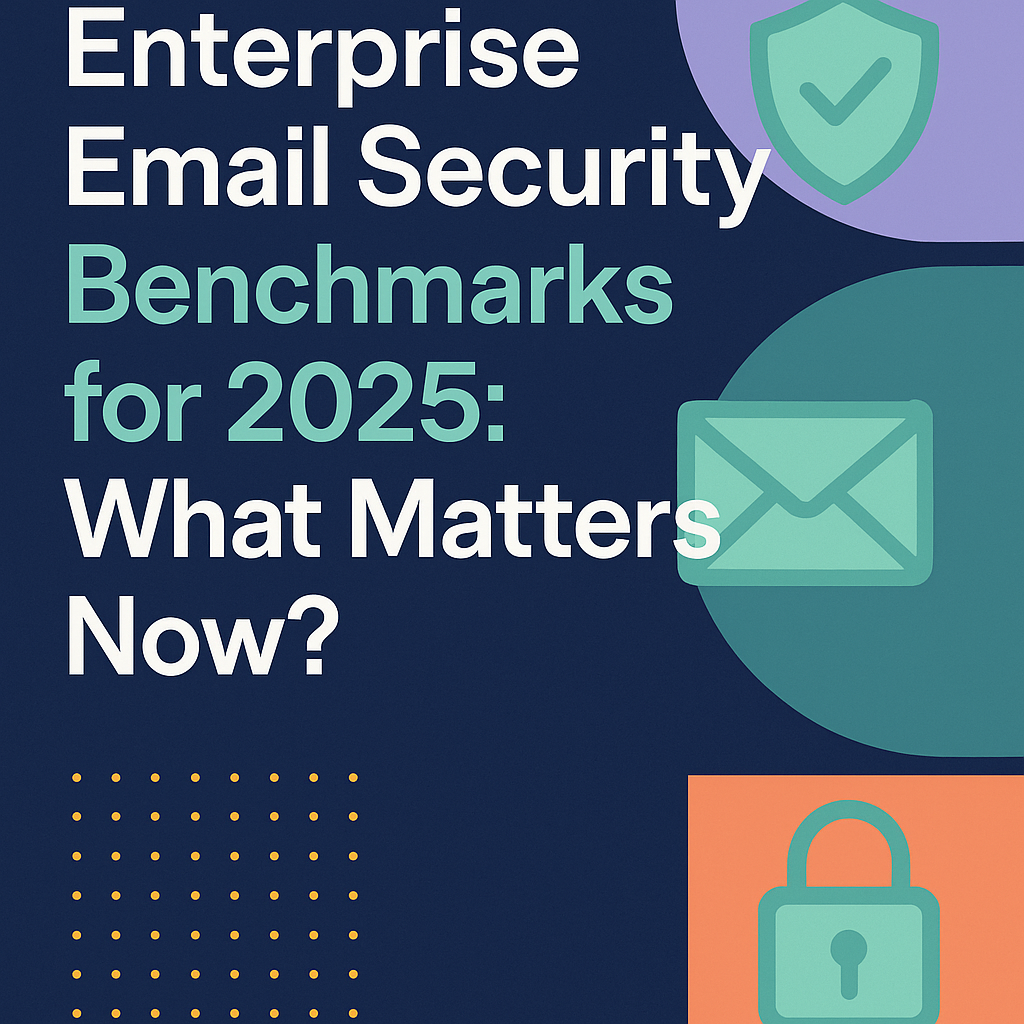

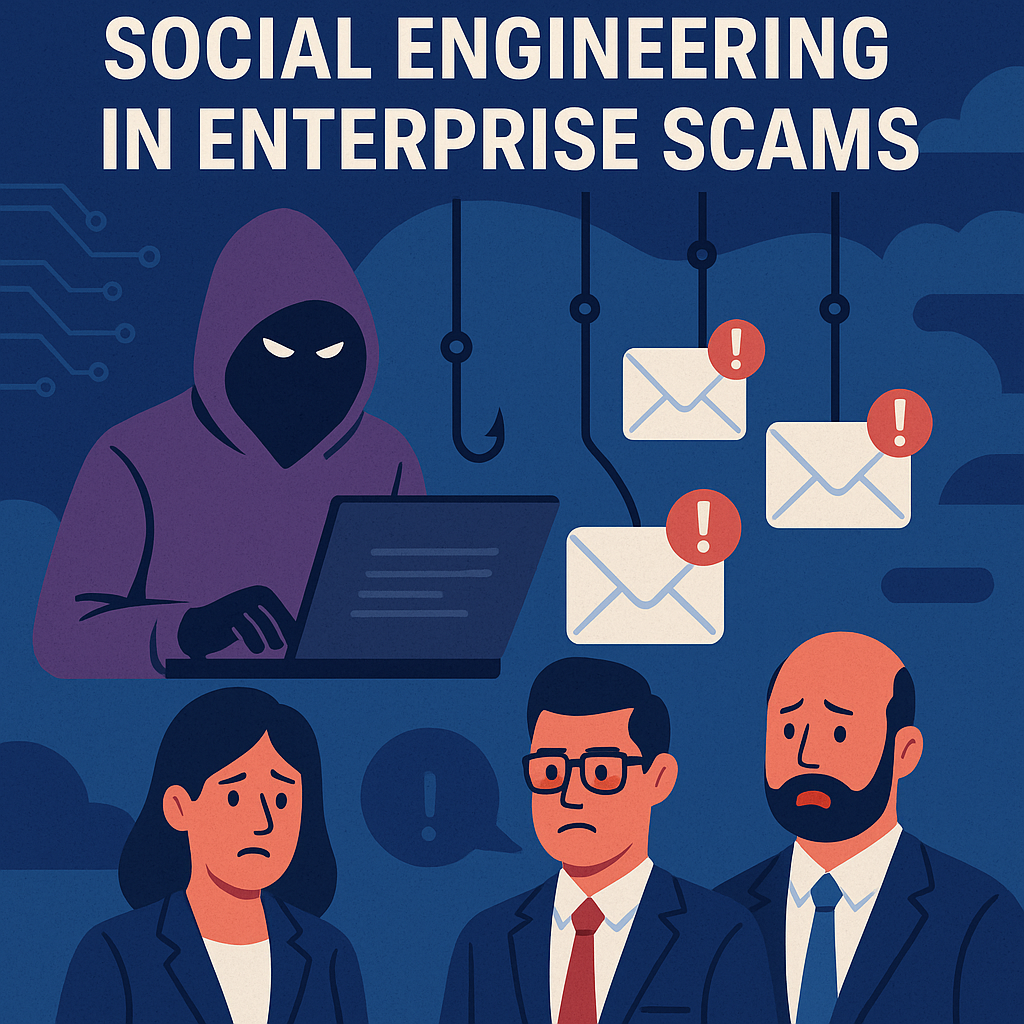
.png)







.png)































%20Attacks%20in%202025.jpg)









